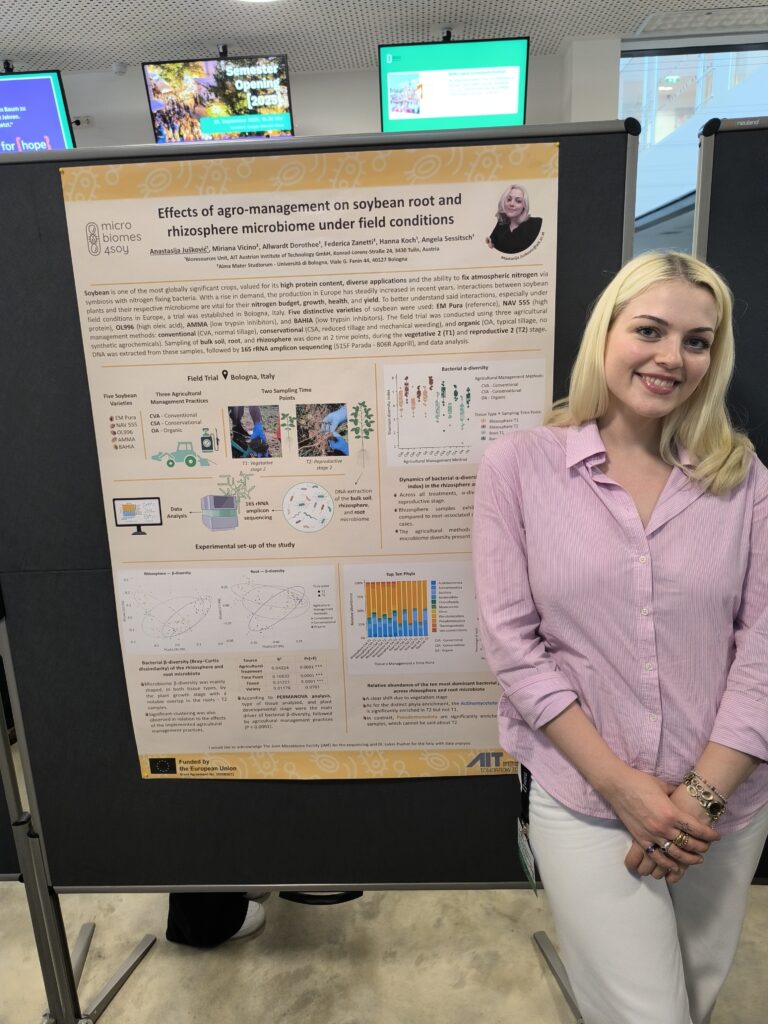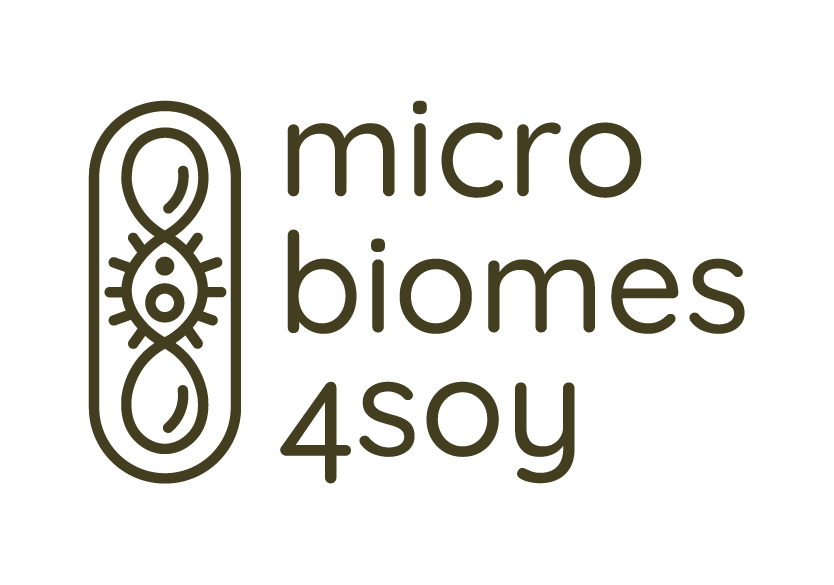In the MICROBIOMES4SOY project, we are collaborating with the support of wonderful early-career researchers. To highlight their contribution to the project, we invite you to meet our PhD Students through these short introductions. Discover the people behind the science: their motivations, research focus, and hopes for the impact of their work.
Meet Anastasija, based in Austria and working at the Austrian Institute of Technology:
My name is Anastasija Jušković, and I am a PhD student working in the Austrian Institute of Technology, Department for Health and Bioresources. Early on in my still ongoing education, I have quickly realized that it is important for me to be involved in research that has some form of direct application and impact. The MICROBIOMES4SOY project allows me to do exactly that.
Soyabean is one of the world’s most important crops, serving as one of the key sources of protein for both human consumption and animal feed. Especially with the rise in population size as well as the popularity of plant-based diets. My work is centred around extending the current understanding of the interactions that happen between soyabeans and their respective microbiome, in field conditions, specifically in Europe, where this is non-native plant. This includes, amongst other things, looking into how different soybean varieties, their seed composition, agricultural practices used, and bacterial inoculants modulate the microbiome during different developmental stages. The communities of microorganisms and the plants that they interact with are intrinsically connected, and it is of crucial importance to understand these relationships better.
It is my hope that these findings will not only have scientific merit but could also positively influence the way that the soyabean crop is commonly grown. Understanding all of the pieces of the puzzle that is the world around us can help gain a more holistic view, and ensure proper, prolific and responsible development of agriculture in the future.

